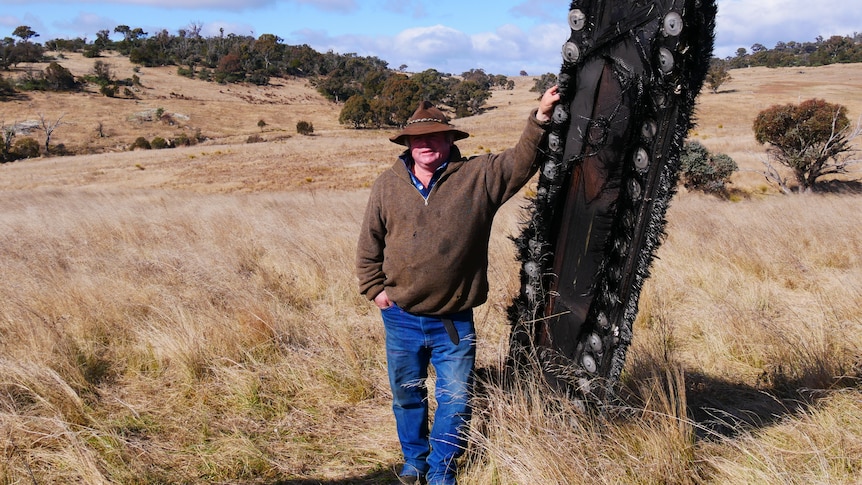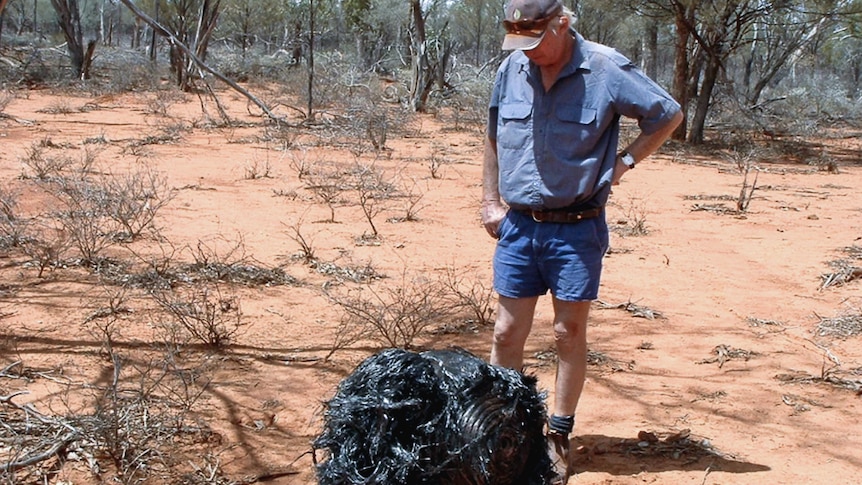A SpaceX representative says a team will travel to Australia after the recent discovery of a large piece of space junk on an outback property, saying the incident is “within the expected analyzed space of what can happen.”
Key points:
- SpaceX will send a team to Australia after their space debris was found in the NSW Snowy Mountains
- The fragments were found after locals heard a sonic boom on July 9
- A space law lecturer is calling on better communication between SpaceX and Australia
Fragments of the SpaceX Dragon capsule were found in the NSW Snowy Mountains, after locals heard a loud bang on July 9, believed to be caused by the spacecraft re-entering Earth’s atmosphere.
Addressing reporters during a live streamed media conference from NASA’s Johnson Space Center on August 4, senior director of the SpaceX Human Spaceflight Program Benjamin Reed acknowledged the incident.
“We did get reports of debris of the Dragon trunk that had landed in the outback of Australia,” he said.
“We actually have a team that’s going to check that out.”
Mr Reed told the conference SpaceX had been working with the Federal Aviation Administration and the Australian Space Agency as part of this process, saying the incident fell within expectations.
“The important news is of course there was no injury or damage,” he said.
“Also importantly is this was all within the expected analyzed space of what can happen.”
Companies require permission from the US government prior to launching space craft, which includes filling out an orbital debris report.
Mr Reed alluded to that as part of his response.
“You have an expected path of where things may come down and this particular debris was within that analyzed space,” he said.
“It’s part of the process we do with NASA, with FAA, internally and we use models that are all jointly approved to predict and plan for these things.”
Mr Reed’s comments to the August 4 conference appear to be the only public comments that have been made by SpaceX about the incident so far. The ABC has contacted SpaceX.
so arrogant
The discovery of SpaceX debris has triggered both intrigue and concern from space experts about whether space activity needs to be better managed.
Space Law Lecturer at UNSW Canberra Duncan Blake says the explanation from Mr Reed about the incident was too vague.
“I’m not satisfied with that response,” he said.
“I think it’s a bit dismissive and I think that SpaceX ought to be doing more than simply saying that it was within their analysis.”
Mr Blake believes the comments imply that SpaceX was aware before hand of the possibility of space debris would land in somewhere like Australia, and decided the risk was acceptable.
He says the company needs to be more open and communicative with Australia if that’s the case.
“I wonder whether they coordinated with Australia when they made that risk assessment,” he said.
“If they didn’t, then that seems somewhat arrogant to make a decision that affects Australia without consulting Australians.”
Coverage cost
Confirmation that SpaceX will eventually visit Australia has been welcomed, with an expectation the pieces will have to be repatriated back to the US.
“They need to come to Australia,” Mr Blake said.
“The space object belongs to SpaceX and they may want the space debris returned to them.”
“If there are any costs involved in doing that, in cleaning up, then they’re obliged to cover those costs.”
As part of the media conference, SpaceX’s Mr Reed noted that there was always room for improvement.
“We look very closely at the data, we learn everything that we can,” he said.
“We always look for the ways we can improve things but again, this was within analyzed space, within expectation.”
.

